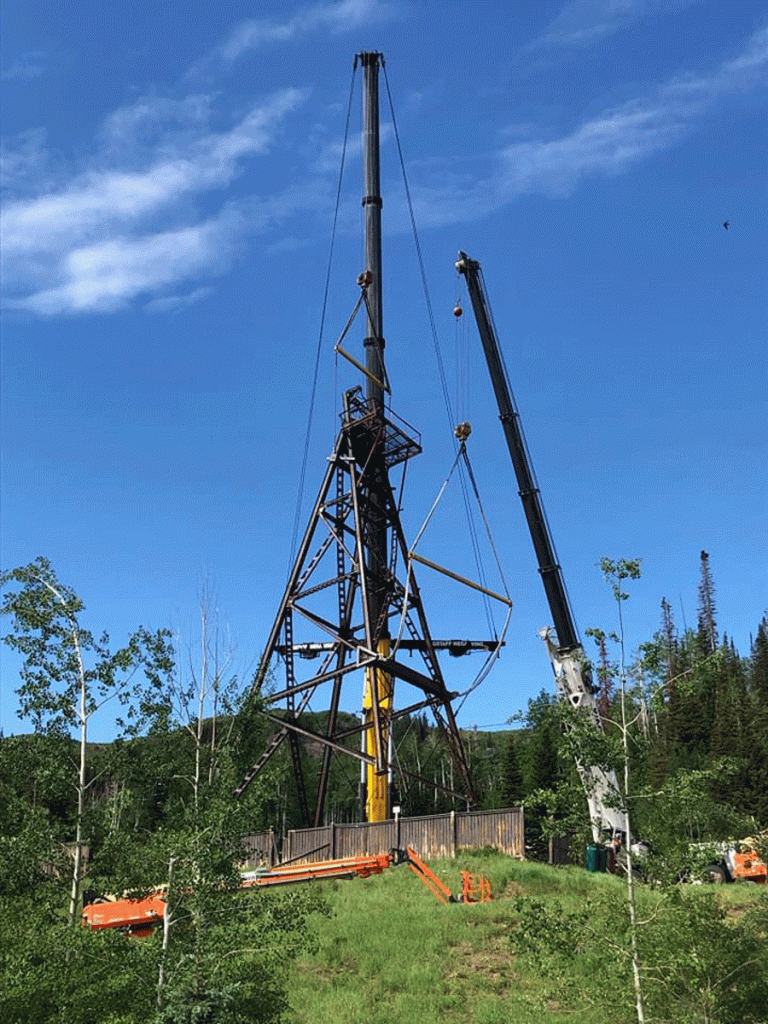The Park City mining industry had its beginnings in the early 1870s with the development of the Flagstaff, McHenry, and Ontario mines, plus numerous other mining claims. During the next 110 years, the local mining industry would create mining features and structures all over the mountains, canyons and, flats around Park City. These included shafts, tunnel portals, roads, waste rock dumps, and many buildings, ore bins, and other structures.
The high-grade ores that were mined were hauled to the local railroad sidings via roads or aerial tramways and shipped to the smelters in the Salt Lake Valley, while the low-grade ores were processed in local mills, which extracted valuable mineral concentrates that were then also transported out of Park City via rail. The remaining ground rock after the mineral concentrates were removed is called “tailings” and these sand/mud/water mixtures were released into the drainages downstream of each of the mills to accumulate along the Silver Creek.
It is hard to find clear evidence of many of the local mine and mill features because subsequent remediation and construction has changed the sites. The site of one of the earliest mills, the Marsac, was converted to the Old Town Transit Center. Most of the Daly West mine and mill site is now occupied by the Montage Deer Valley Resort Hotel. The Park City Consolidated Mine site was covered by the lower St. Regis Deer Valley Hotel and other developments along Deer Valley Drive. Even the large tailings storage facility just downstream of Old Town along Silver Creek is impossible to see because the Prospector Square neighborhood and business district was built on top of it.
If you have been paying attention to the construction of the Extell-Mayflower Resort along U.S. Highway 40 you are probably impressed with the scale of the development. But did you know that the resort base facilities are located over the former Mayflower Mine and mill site? All of these developments are examples of mine or mill site remediation and repurposing that resulted in long-term and valuable new land uses.

Credit: Image courtesy of Morgan Pierce, Park City Historical Society & Museum.
Other examples of mine closure to improve the natural environment are present around town. Alongside the road up from the bottom of Empire Canyon is a stream – a stream channel that once conveyed mill tailings downstream. These mill wastes were remediated and the channel was then restored to what we see today. The large Richardson Flat tailings storage facility east of Park City is passed by users of the Rail Trail who may not recognize this facility because it was covered with soil and revegetated, and the adjacent wetlands were cleaned up and restored to more natural conditions.
Many of the old mine and mill buildings and other structures around town were removed after their operations ceased. Others are still present in various stages of collapse. But there are efforts to save those structures that can still be stabilized because of their historical significance.
The Empire Pass Master Owners Association has already saved the Judge Mining and Smelting building, Little Bell mine ore bin, and the Daly West Mine headframe, hoist, and hydrant sheds in Empire Canyon. The Park City Museum’s Friends of Ski Mountain Mining History (FOSMMH) has saved the California-Comstock mill; King Con counterweight; Thaynes conveyer; the ore bins at the Jupiter, King Con, and Little Bell mine sites; and the Silver King Consolidated water tanks. The FOSMMH are now seeking donations to save the Alliance Mine watchman’s cabin and for a capital campaign to save the Silver King and Thaynes headframes and mine buildings. You can find out more about this work and offer your support at parkcityhistory.org/mining/.
The Park City Museum and FOSMMH are hosting a lecture titled “Abandoned Mine Reclamation Program History, Mine Closures, and Historic Preservation in Utah” given by Steve Fluke and Seth Button of the State’s Abandoned Mine Reclamation Program (AMRP) and Utah Division of Oil, Gas and Mining (DOGM), respectively. The lecture is on Wednesday, February 15 from 5-6 p.m. at the Park City Museum’s Education and Collections Center located at 2079 Sidewinder Drive. Read more about this lecture here.